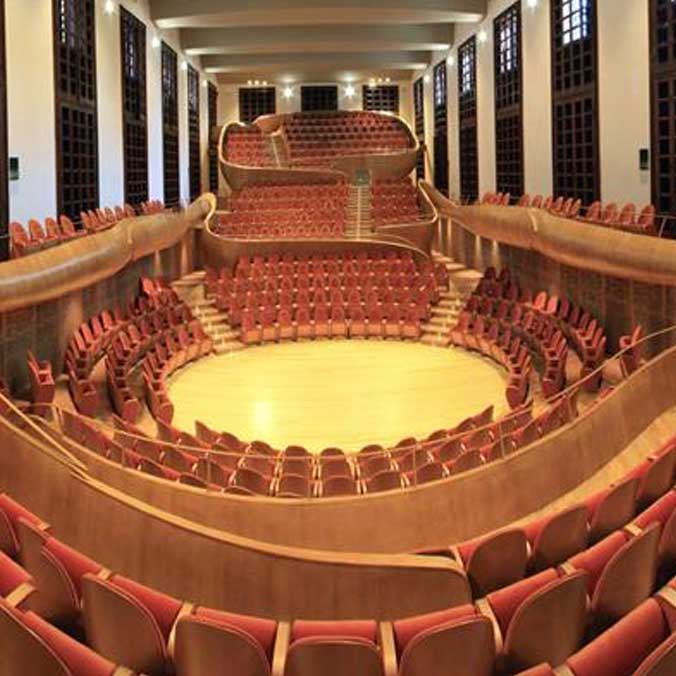Music permeates the life of this city; it is played in the theatres and in the spectacular auditorium of the Museo del Violino; it is studied at the conservatory; it is perfected on the courses offered by the Stauffer Academy,and musical themes and characteristics are explored in depth on degree courses in musicology and sound engineering.
‘Claudio Monteverdi’ Conservatory
The ‘Claudio Monteverdi’ Conservatory of Music in Cremona is a public institution for advanced artistic and musical training that also undertakes related research and artistic production initiatives.
As such, the Conservatory’s main aims include providing musical training at the highest professional levels, disseminating and improving musical culture at all levels, including through collaboration with institutions and cultural bodies on basic and secondary training, and disseminating musical and artistic culture in all its forms through educational and cultural pathways that are consistent with the educational and social needs of the local population.
Embedded in a context characterised by a musical tradition that is firmly rooted in the local fabric, the ‘Claudio Monteverdi’ Higher Institute of Musical Studies provides a rich and well-structured educational offering designed to meet a comprehensive range of needs through a structure that encompasses all educational fields.
Go to the site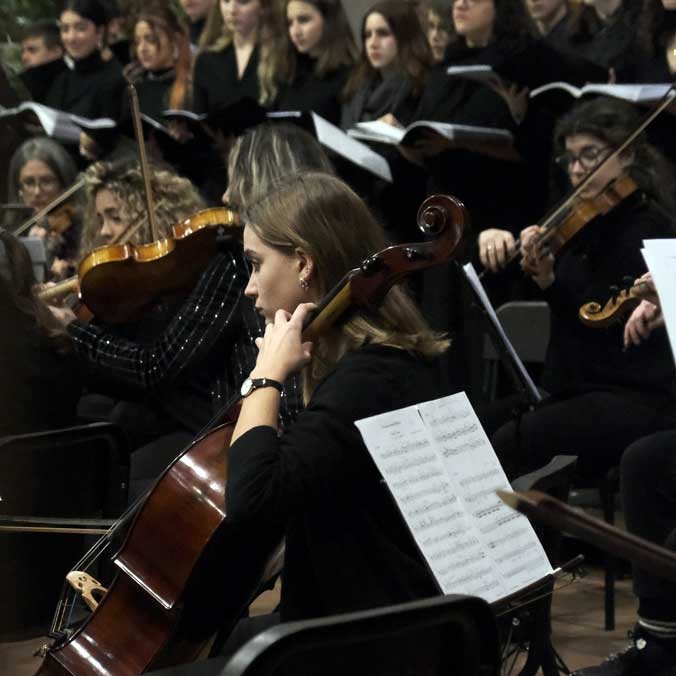
Stauffer Academy
The Stauffer Academy, a centre for advanced training to support future generations of musicians, has been training soloists, established chamber ensembles and first parts of some of the most distinguished orchestras since 1985, with some of the most eminent internationally renowned masters contributing to its creation, including Salvatore Accardo (violin), Bruno Giuranna (viola), Rocco Filippini (cello) and Franco Petracchi (double bass).
Annual courses are taught by Salvatore Accardo, Bruno Giuranna, Antonio Meneses, Franco Petracchi and the Cremona Quartet, a professional annual course for first violinists is taught by the first parts of Europe’s leading orchestras, and various masterclasses and residency programmes are organized in conjunction with some of the most prestigious international academic institutions.
Admittance to the academy is based on merit and personal motivation, as well as a rigorous selection process.
Go to the site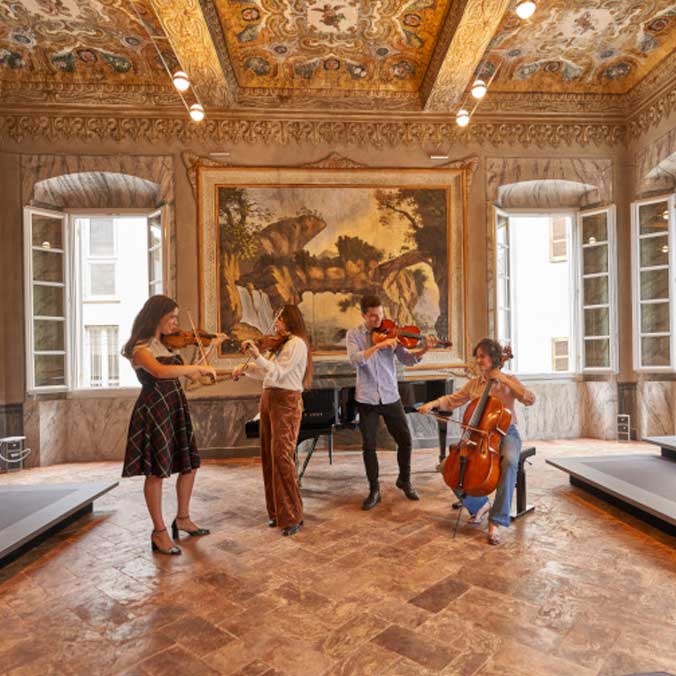
The Ponchielli Theatre
The city’s largest theatre, Il Ponchielli, as it is affectionately known, organizes annual opera seasons, concerts, drama and ballet performances, and major events. It also hosts one of Italy’s largest festivals devoted entirely to Baroque music and named after Claudio Monteverdi, a leading figure in the history of music and opera. The various productions, musical performances and unusual offerings staged here help keep the musical tradition of the golden age of Cremonese luthiery alive.
https://www.teatroponchielli.it/
Go to the site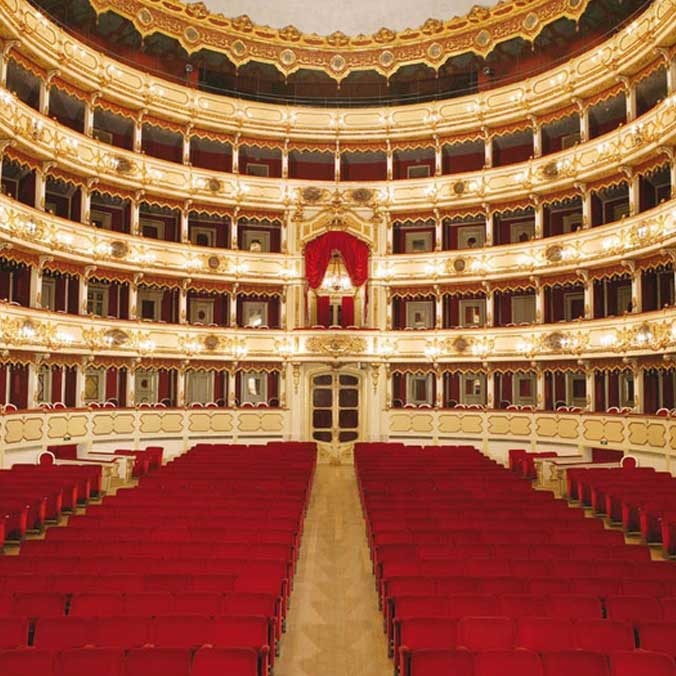
UniPV – Department of Musicology and Cultural Heritage
Preserving and protecting an artistic heritage requires a solid background in various fields, from humanities to science and technology. In Cremona, the prestige of the ancient art of luthiery has long been accompanied by prestige in musicological research, for which the city is recognized as one of the most eminent centres of international research. This is now also true when it comes to the preservation and restoration of musical instruments, thanks to the various degree and PhD courses offered by the Department of Musicology and Cultural Heritage at the University of Pavia’s Cremona campus and its ‘Arvedi’ Laboratory of Non-Invasive Diagnostics at the Museo del Violino.
The University of Pavia is the oldest university in Lombardy and one of the oldest in Europe, having been founded in 1361, when Boccaccio and Petrarch were still alive!
Today, it has over 25,000 students enrolled across its 17 departments and two sites, one in Pavia and the other in Cremona.
The current Department of Musicology and Cultural Heritage is the fruit of a journey that began in 1952, when the School of Music Paleography was established in Cremona as part of the University of Parma. Nowadays, it is the Department of Musicology and Cultural Heritage, offering 3-year and master’s degree courses in Musicology, Literary Sciences and Cultural Heritage, Conservation and Restoration of Cultural Heritage, the Sources and Tools for Art History curriculum of the master’s degree in history and Enhancement of Cultural Heritage, a PhD in Literary and Musical Sciences, and the international master’s degree in Music and Cultural Practice in Europe.
Go to the site
Polytechnic University of Milan – Cremona Campus (master’s course in Musical Acoustics)
Of all the information engineering fields, acoustics and audio are currently experiencing a moment of rapid and profound technological evolution, with new solutions appearing on the market every day allowing us to record and reproduce immersive listening experiences using increasingly affordable devices. Thanks to new intelligent signal processing technologies, it is now possible to extract musical information directly from the audio stream, personalize musical content and create increasingly comprehensive listener profiles. New acoustic signal processing technologies also make it possible to improve the design of valuable musical instruments and specialist listening spaces in which to enjoy music thanks to the convergence of various disciplines, all of which share one thing in common: the research and development that information engineering makes possible.
The Polytechnic is the oldest university in Milan, founded in 1863. Today it has over 40,000 students on its books, including 900 PhD students, and comprises 12 departments, 6 schools and over 250 laboratories. The Polytechnic’s Faculty of Engineering is the largest in Italy (with almost 20% of Italian engineers graduating there) and one of the largest and most prestigious in the world. It also has the highest concentration of international students (around a third of all master’s students) of any university in Italy, with a master’s degree curriculum delivered almost entirely in English.
Its Department of Electrical, Information and Bioengineering Engineering (DEIB) covers information engineering, and with a staff body of almost 1,000 researchers and administrative technicians it is the largest ICT department in Europe and one of the most important in the world. The Image and Sound Processing Lab, which has to date promoted, coordinated or participated in around 30 European projects and hundreds of national and international projects, including non-European ones, all in the field of multimedia signal processing, is the main research group that has promoted musical acoustics research initiatives in Cremona.
Go to the site
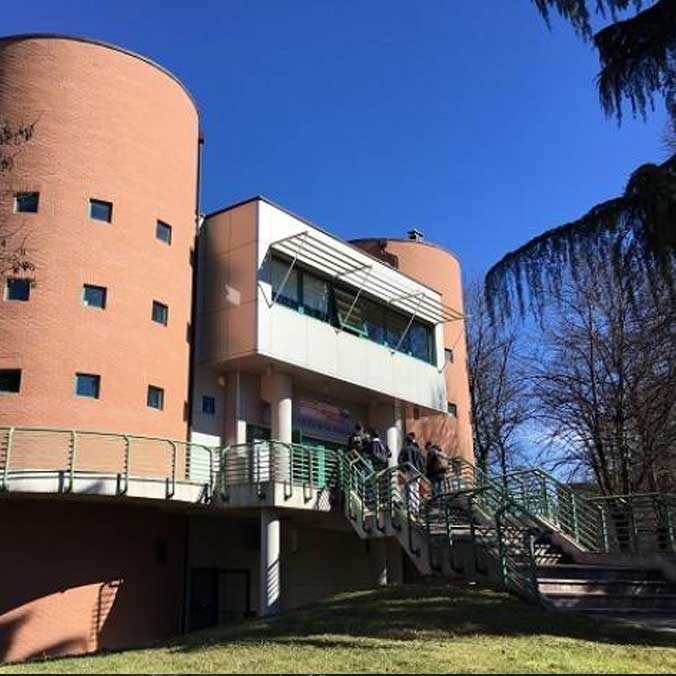
Giovanni Arvedi auditorium
The Giovanni Arvedi Auditorium is a 464-seat jewel of acoustic engineering carved out of the Palazzo dell’Arte’s original assembly hall and designed by engineer Yasuhisa Toyota of Nagata Acoustics, one of the world’s leading experts in the field with over 50 concert halls around the world already under their belt, from the Mariinsky Theatre Concert Hall in St. Petersburg to the Walt Disney Concert Hall in Los Angeles.
The stage sits 3.5 metres below floor level in what was a modification to the original design in response to the need to increase the free space in the hall to improve its sound performance, a modification made possible by its deep foundations. The ceiling, moulded with rounded forms and lines to optimize sound distribution, now sits 14m above the stage, helping to achieve a level of acoustic perfection that also allows it to be used as a recording studio.
The architectural choices were made in keeping with the acoustic design, incorporating movable acoustic curtains behind the paneless historic doors to create variable absorbing surfaces as required, and other movable acoustic curtains to the side of the stage, concealed by wooden cladding with a 50% open surface. A 60cm gap serves as a sound box beneath the central stage, made of special Alaskan yellow cedar wood.
All of these measures help to achieve a sound reverberation time of 1.5 seconds with the hall empty and 1.4 seconds with an audience.
In order to maintain the option of using natural light while insulating against noise from outside, the original openings were fitted with double windows incorporating high-performance acoustic glass.
Go to the site